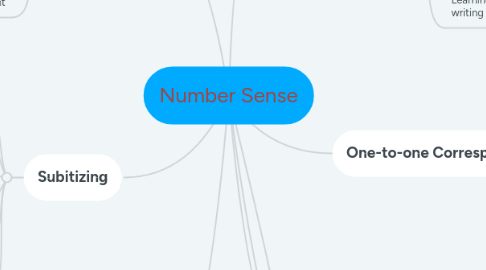
1. Cardinality
1.1. "Understanding that the last number word said when counting tells how many objects have been counted."
1.2. "How many do you have in all?"
1.2.1. New quantity is the result of itself and all previous quantities.
1.3. Comparisons
1.4. Purposefully count
2. Subitizing
2.1. "Quickly recognizing and naming how many objects are in a small group without counting."
2.2. Amount = Quantity
2.3. Numbers on a die/dominoes.
2.4. "just see".
2.5. Visualize patterns to comprehend combinations.
2.6. "small groups within the larger amount" (p. 122).
3. Relations Core
3.1. Less/More = Related
3.1.1. Less exposure to "less than" leads to more difficulty.
3.1.2. Connect "less" to better-known concept of "more".
3.1.3. Use objects + make connections.
3.1.3.1. Stack counters to represent how they are the same (p. 124).
4. Number Relationships
4.1. One-to-one correspondence is furthered to develop strategies that emphasize number relationships.
4.1.1. One/two more/less
4.1.1.1. Counting on
4.1.2. Benchmark numbers
4.1.2.1. Frames
4.1.2.1.1. Share strategies!
4.1.3. Part-part-whole
4.1.3.1. Quantity in terms of its parts.
4.2. Games = diagnostic
5. Number Sequence
5.1. "The names and ordered lists of number words."
5.2. Verbally count 0-100 forward/backward/from different starting points.
5.3. Learning to count: numeral recognition and writing the numbers.
6. One-to-one Correspondence
6.1. "Counting objects by saying numbers words in one-to-one correspondence with the objects."
6.2. Provide objects for students to manipulate while counting (blocks or counters).
6.2.1. Count objects from left to right, move objects as they count, touch them as they say each number word. (p. 118)
6.2.2. Build understanding of zero.
6.2.2.1. No objects in a set.
6.3. Relate to classroom experiences.
6.3.1. Number of napkins needed for class snack.
7. Develops Gradually
7.1. Explore, visualize, relate numbers
7.2. Results in flexible thinking.
7.2.1. Indicated by multiple representations and uses of numbers.

